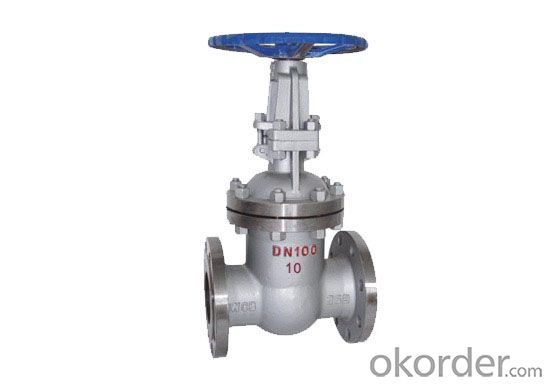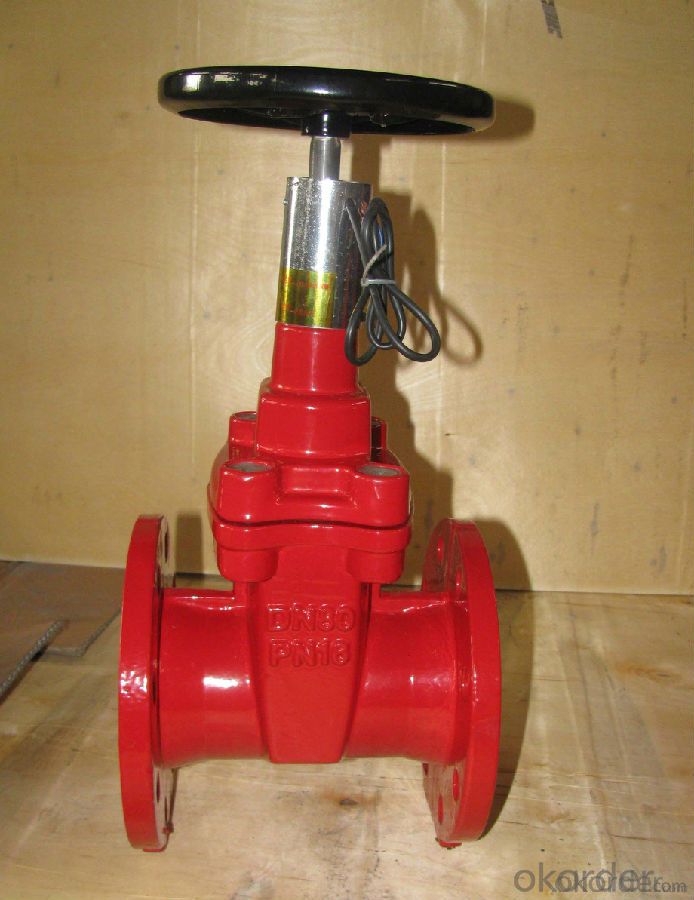Loading Port:Tianjin
Payment Terms:TT OR LC
Min Order Qty:150 m.t.
Supply Capability:10000 m.t./month
1.Structure of Gate Valve Description:
Gate valves are primarily used to permit or prevent the flow of liquids, but typical gate valves shouldn't be used for regulating flow, unless they are specifically designed for that purpose. Because of their ability to cut through liquids, gate valves are often used in the petroleum industry. For extremely thick fluids, a specialty valve often known as a knife valve is used to cut through the liquid. Typical gate valves are designed to be fully opened or closed.When fully open, the typical gate valve has no obstruction in the flow path, resulting in very low friction loss.
2. Main Features of the Gate Valve:
The sealing surface of valve seat and gate is overlaid (surfaced) with hard alloy, resistant to corrosion and abrasion.
Valve seat, gate and stem are sealed with imported lip-shaped combined seal structure, so they are safe and reliable, and the switching torque of valves is low.
Simple and safe design of valve gate and seat, makes it easy to change without special tools.
Non-rubber seal effectively protects valve chamber from mud, sand and rock, etc.
Stem sealing can be changed under pressure.
Stem is designed to be rising stem and non-rising stem, with a clear sign for valve opening.
Drive mode falls into manual, hydraulic and gear.
Combining type falls into flange, thread and hub.
3. Images of the Gate Valve


4. Specification of the Gate valve
1. Size: 1-1/2"-24" (DN40-DN600)
2. Design Standard: BS5150, BS5163, AWWA C509/C515, DIN3202 F4/F5, MSS SP-70.
3. End Flange Connection: ANSI B 16.1, BS EN 1092(PN10, PN16), DIN 2501(PN10, PN16), BS 10 Table E
4. Disc: Grey iron, Ductile iron, with or without EPDM
5. Seat: Stainless steel, Brass/Bronze etc, Soft seat or seal: EPDM, NBR
6. Testing: API 598, ISO 5208
7. Options: Lever, Gearbox operate, Electric actuator, Pneumatic operator, Opening indicator, With limit switch, Others.
8. Type: Non rising stem, Rising stem
9. Finishing: Epoxy coating, Painting etc
10. Usage: Water supply and drainage, Electric power, Petrochemical, Metallurgical, Firefighting / Fire fighting, or other industries.
5.FAQ
1. What's are the characteristics of gate valve?
The distinct feature of a gate valve is the sealing surfaces between the gate and seats are planar, so gate valves are often used when a straight-line flow of fluid and minimum restriction is desired. The gate faces can form a wedge shape or they can be parallel.
2. What is the structure?
Bonnets provide leakproof closure for the valve body. Gate valves may have a screw-in, union, or bolted bonnet. Screw-in bonnet is the simplest, offering a durable, pressure-tight seal. Union bonnet is suitable for applications requiring frequent inspection and cleaning. It also gives the body added strength. Bolted bonnet is used for larger valves and higher pressure applications.